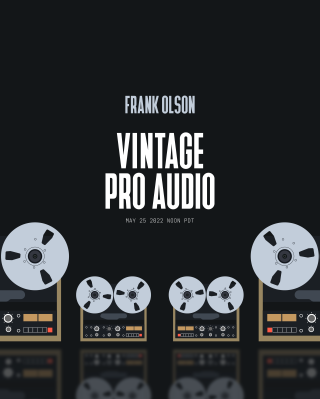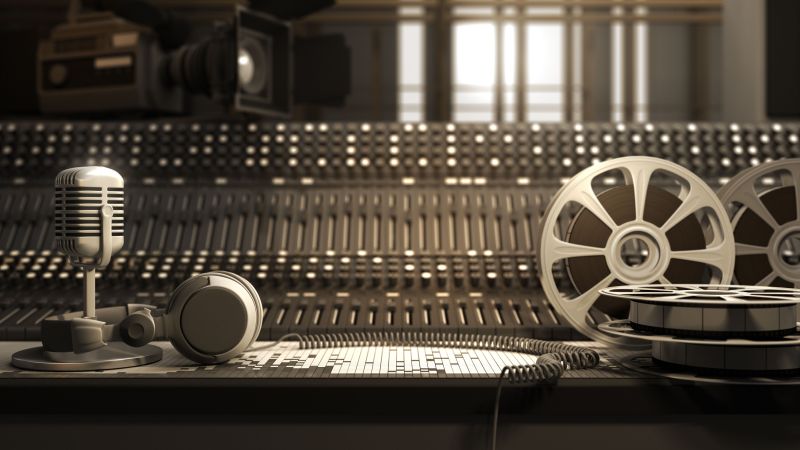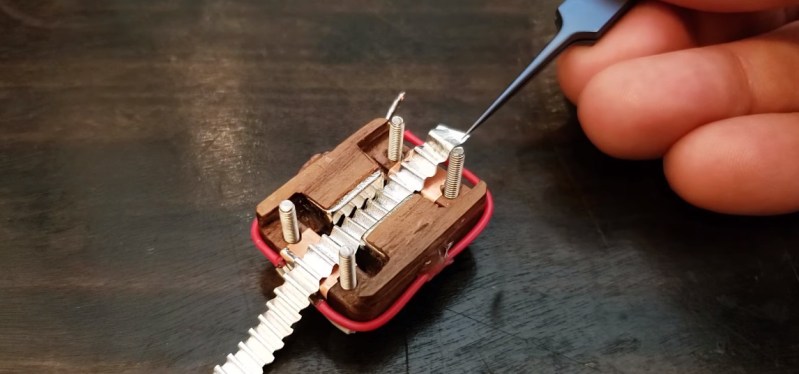Despite the fact that we’ve been doing them for years now, it’s still hard to predict how a Hack Chat will go. There’s no question it will be an hour of interesting discussion of course, that much is a given. But the dynamics of the conversation can range from a rigid Q&A, which isn’t exactly unexpected when you’ve only got a limited amount of time with a subject matter expert, to a freewheeling hangout with a group of people who all happen to be interested in the same thing.
 This week’s Vintage Pro Audio Hack Chat with Frank Olson definitely took the latter approach. The allotted hour flew by in a blink, with so many anecdotes and ideas flying back and forth that at times it was tricky to follow. But no worries, with the Chat transcript to pore over, we can make sure none of that accrued first-hand knowledge goes to waste.
This week’s Vintage Pro Audio Hack Chat with Frank Olson definitely took the latter approach. The allotted hour flew by in a blink, with so many anecdotes and ideas flying back and forth that at times it was tricky to follow. But no worries, with the Chat transcript to pore over, we can make sure none of that accrued first-hand knowledge goes to waste.
So what did we learn during this Chat? Well, it probably won’t come as much of a surprise to find that those who have an opinion on audio gear tend to have a strong opinion on it. Folks were painting with some fairly broad brushes, with particular manufacturers and even whole fields of technology receiving a bit of good-natured ribbing. If your favorite brand or piece of gear gets a specific shout-out, try not to take it too personally — at the end of the day, most in the Chat seemed to agree that sound is so subjective that the right choice is more often than not whatever sounds best to you at the moment.
Which leads directly into Frank’s work with custom microphones. As a musician he knew the sound he was looking for better than anyone, so rather than spend the money on big-name gear, he prefers to build it himself. But the real hook here is their unique construction, with pieces that reimagine design concepts from mid-century commercial equipment using unexpected materials such as thin pieces of walnut cut with a vinyl cutter. Frank explains that the structure of the microphone isn’t as critical these days thanks to the availability of powerful neodymium magnets, which gives the builder more freedom in terms of materials and tools. He says the goal is to inspire others to try building gear from what’s available to them rather than assuming it won’t work because it’s unconventional.
We appreciate Frank, and everyone else, stopping by this week for such a lively and friendly discussion. Let’s be honest, a Chat specifically for folks who want to discuss concepts as personal and nebulous as how they perceive the warmth of sound could have gotten a little heated. But the fact that everyone was able to express their opinions or ask for advice constructively is a real credit to the community.
The Hack Chat is a weekly online chat session hosted by leading experts from all corners of the hardware hacking universe. It’s a great way for hackers connect in a fun and informal way, but if you can’t make it live, these overview posts as well as the transcripts posted to Hackaday.io make sure you don’t miss out.

















Thanks all! It was fun, and great to share it with a community of like minded makers and hackers!
It’s awesome that you have made such serious (and successful) efforts to create real microphones from scratch. I’ve made or modded some mics using commercially available electret capsules, but I’m mainly just assembling some electronics and messing with enclosures and suspensions, and trusting that the capsules are as good as they could be. So, respect!
during my time in ottawa ,my appartment was in the same building as “the radio clinic”,which was a repair,rental,and sales
store for interesting audio and video gear,of which I purchased
a few jems,and passed on a less paul,serial # 0003,which not
bieng left handed I didnt want,and I have a lefty custom so,nice neck and action,but ,I did get some mikes,they had a very very serious collection of mikes that they would rent to hollywood for historicaly accurate scenes and bizzarre early televisions.